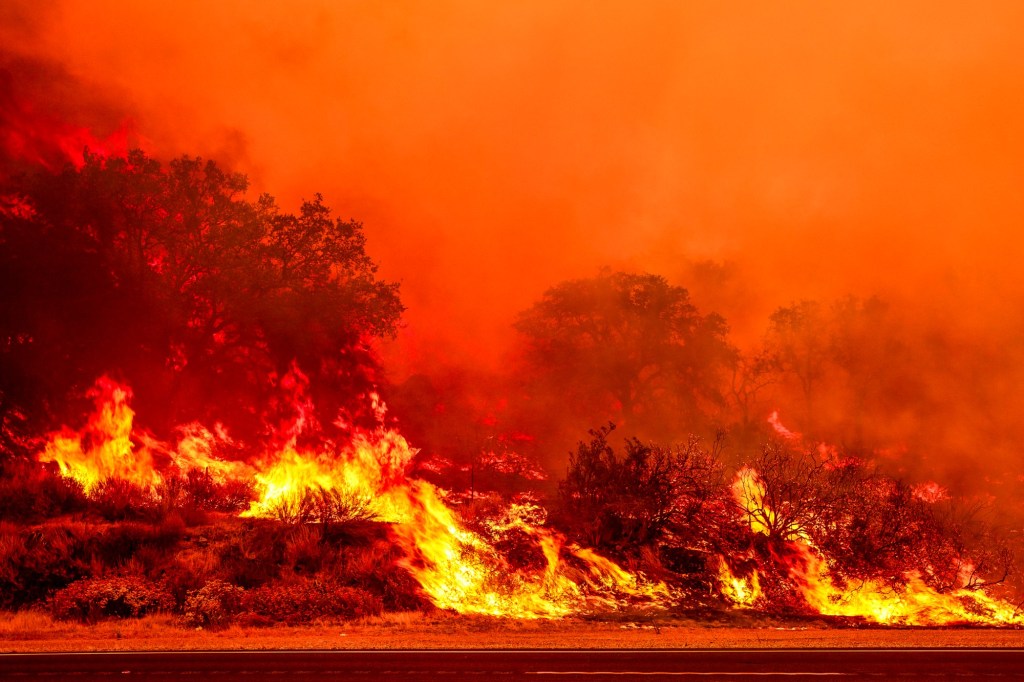
Now that we have seen, as shown in this space last week, that climate change is real, man-made, dangerous, what, I have been asked, are we going to do about it?
The short answer is something, rather than nothing. Yes, the Earth is well past the 1.5 degree Celsius average temperature rise that was widely seen, and is, the tipping point for global warming and the consequent weather and ocean-rise factors from which there is no real return, at least for hundreds of years.
But the arguments for still doing nothing in the present and future just because we did nothing before are logically full of holes.
“California wildfires burn as much carbon into the atmosphere as cars and trucks and natural-gas turbines!” we are told. Well, let’s then work on dampening down wildfires while we’re at it. One thing that contributes to more of them is hot and dry wildlands.
“But India and China are big emissions cheaters,” we are told, “always with the new coal plants!” The idea that this should prevent us from leading the way in cutting back on the dirtiest form of energy production makes zero political or scientific sense.
“And California is just one state. Why get cracking on green energy here when they won’t in Wyoming” cry the do-nothings. Just because your neighbor lives a life of crime is no reason to become a jewel thief. There are other glamour professions.
“But the planet is old, and big. Puny humans can’t affect it.”: This is universally acknowledged by people who have studied the matter, i.e. scientists, and not just guys who make stuff up and then write a letter to the editor, that this is demonstrably not the case, and has not been since the beginning of the Industrial Revolution, when the world began to be choked by smoke and smog.
Bill McKibben, the Altadena kid turned Harvard Crimson editor turned New Yorker staff writer turned Vermont college professor, who in 1989 wrote the doomsday book “The End of Nature,” now acknowledges that though nature did “end” — humans, though part of nature, have affected the climate in ways that are not natural — we still have it within our power to mitigate the problem.
His new book, “Here Comes the Sun: A Last Chance for the Climate and a Fresh Chance for Civilization,” published this month, is undoomsday optimistic.
He notes that in our own state we have almost halved the use of natural gas in just the last two years, progress for California that can be modeled elsewhere.
Writing the book’s introduction during a Vermont rain last winter that should have been snow, he notes that “2024 was the hottest year on record — indeed, the paleoclimatologists said it had been the hottest year in the last 125,000.” The local hook: “Oh, and Los Angeles caught fire; among the least important results of that conflagration was that the home of my earliest memories, up against the Altadena hills, burned to the ground.”
What gives McKibben hope, he writes, is that within the last several years we crossed the point at which “producing energy from the sun dropped below the cost of fossil fuel.” It is no longer “the Whole Foods of power — nice, but pricey.” Photovoltaic cells and wind turbines as well are now “the Costco of energy, inexpensive and available in bulk.”
Problem is, of course, in this nation at least, that we live in the short term under the rule of a president who claims to believe, because he made it up, that “climate change is a hoax.” Not only that; as a headline that ran on the second day of his return to the Oval Office has it, “Trump Wants to Unleash Energy, as Long as It’s Not Wind or Solar.”
He doesn’t like the look of turbines off Nantucket, and he notes that the sun disappears at night. What, you think the Santa Barbara surfers like the looks of the oil derricks off Rincon?
Solar and wind aren’t the only answers. Responsible energy use by us all during the transition; battery research in our universities; sustainable building practices — all will help, until we rid ourselves of the president who said of solar on the campaign trail: “It’s all steel and glass and wires. It looks like hell. And you see rabbits get caught in it.”
Larry Wilson is on the Southern California News Group editorial board. lwilson@scng.com.



